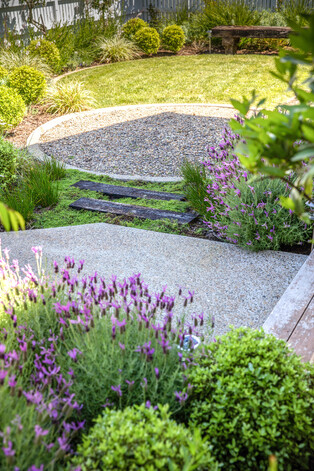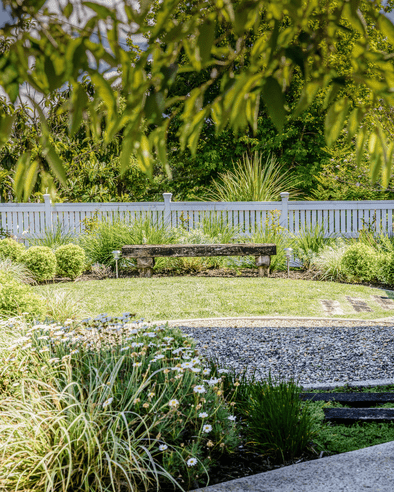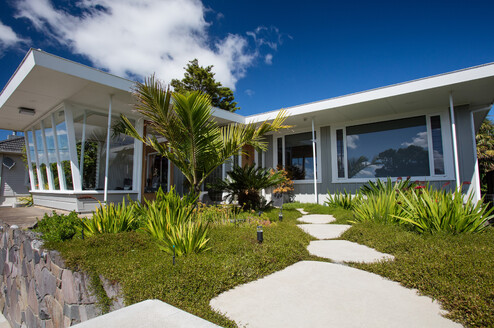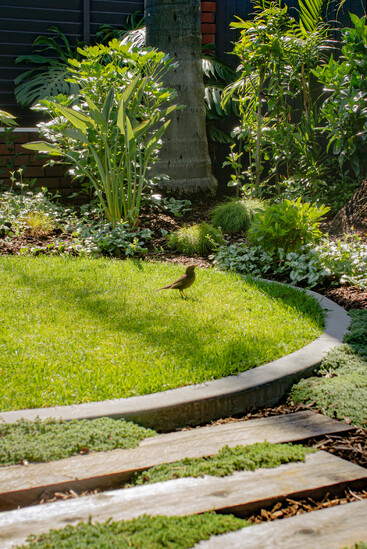Small spaces present unique challenges when it comes to landscape design. However, with the right approach, you can transform even the tiniest of spaces into functional, stylish areas that feel just like home. In this blog post, we'll explore five essential small garden design tips to help you make the most of your outdoor space.
1. Plan and style your space to suit your way of life.
The first thing to consider before you start designing your small space is what you are going to use it for the most. What is going to bring you outside and make you want to enjoy and use this space? Think about your daily routines and activities. Do you love reading and would enjoy a cosy nook to sit and read in? Or are you an entertainer and would love an area to have guests over to sit and dine? Would you love a quiet sanctuary where you can grow flowers to decorate your home with, or some fragrant herbs that you can collect and use for cooking? There are so many possibilities to how you can use your space. There is no right or wrong answer - the best option is the one that suits your needs and will encourage you to get outdoors and enjoy your special space.
2. Think of your space like an outside room.
While small spaces present us with the obvious challenge of having less space to work with, it does not mean that they need to feel cramped or confined. Instead, think of small spaces as if it were an extension of your home - a cosy retreat where you can escape. Styling outdoor areas as rooms enables for a seamless transition between the indoors and outdoors. Consider incorporating elements that blur the lines between outside and inside, such as a glass sliding door, or large windows, or a small balcony or patio. These features help to create the illusion of a bigger space whilst also bringing in natural elements of fresh air and sunlight.
In this Sculpt Gardens design, curves have been used to create a visual journey from the front entrance to the home to the secluded, sunny spot on the lawn. Curves in the hardscaping, such as the pebbled patio area, and the concrete edging, are also mimicked in the planting through circular Pittosporum balls and Lavender. The timber steppers mirror the wooden bench, creating a sense of harmony as you move through the garden.
3. Keep the design bold and simple.
When designing small spaces, often less is more. One of the things to avoid doing is to over-clutter the area with unnecessary furniture or accessories. Think about the main use of your space, and then have a careful think about what you actually need to be able to use the space effectively. If you are using your space as a cosy retreat for a morning coffee and a good book, you probably do not need a dining area that is taking up most of the area. Instead, opt for more practical furniture, like a lovely comfortable chair that entices you outside. You could also consider multipurpose furniture that serves different purposes, such as a coffee table with built in storage. Consider something like a wall mounted umbrella for shade in a small space - they are compact, and can easily be put down when not in use. Overall, when selecting your materials, choose a cohesive colour palette and continue it throughout the design to create a sense of utility and harmony.
4. Linking in with out.
When trying to create big impacts with small spaces, it is important to try and create a sense of continuity with the surrounding environment. One way to achieve this is to incorporate elements of nature into the interior of your home, such as with indoor plants or natural materials like wood or stone. If your exterior walls or edging are made from materials such as stone or corten, a great way to create seamless movement for the eye is to continue this material in features such as a fire pit, water feature, or planters.
Planters with lush greenery, combined with the relaxing sound of a water feature, make for a harmonious transition. Align glass doors or windows with focal points such as gardens to draw the eye outside. Matching interior and exterior paint colours also helps to create unity. For example, a property situated by the seaside may have a coastal blue exterior, which can be echoed in the interior with soft, subtle pops of blue. Continuing interior flooring to the exterior, such as timber, blurs the transition, making movement feel smooth and spaces large. Another way in which we can make spatial boundaries disappear, is to repeat colours, textures and shapes from features such as fencing, gravel pathways, or timbers when selecting interior materials.
5. Use shapes for small spaces.
Finally, consider the role that shapes play in small spaces. Select furniture and materials that have rounded edges rather than sharp corners, as this can create a sense of flow and movement within the area. Also consider the scale and proportion of each piece to ensure that it fits comfortably within the space without overwhelming it. Experiment with different shapes and arrangements until you find a layout that maximises functionality and visual appeal. For small gardens, using curves is always our top pick, as they take us on a visual journey in contrast to straight lines. We want our eyes to wander through the space, rather than take us from one place to the next. Opt for curved planters, curved furniture, curved pathways, a curved tiny pool, or curved garden beds.
With these 5 design ideas, we hope you will feel inspired to begin planning your special outdoor space. There is no right or wrong for how you should use your garden, go for the option that will entice you to out into the outdoors. If you are in Auckland and would love for us to transform your small space, book a consultation with one of our landscape designers here.












